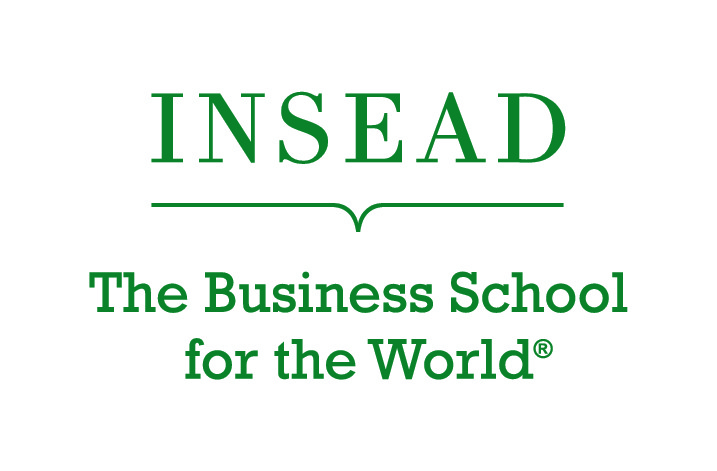- Learning
Identity Workspaces
The Business School’s Attractiveness as a Holding Environment
Gianpiero and Jennifer Petriglieri at INSEAD have recently published a paper in the Academy of Management’s Learning and Education journal on the existence of “identity workspaces” and the role that business schools can play in fulfilling these in a world where careers and employment is increasingly fluid.
It is not difficult to recognise the importance of the value (whether great or small) that individuals place on identifying themselves with the organisations they engage with. But, as the Petriglieris note, the concept of “identity” has not risen to be a “keyword” on the submission website of the AoM Learning and Education Journal menu suggesting the freshness of this concept in management learning research. Nonetheless identity has been explored by legions of anthropologists and sociologists and by organisational behaviour professors with psychodynamic and sociological orientations, such as Manfred Kets de Vries and Herminia Ibarra at INSEAD and Konstantin Korotov at ESMT.
The idea around identity workspaces is based on four key but rather impenetrable jargon phrases.
We suggest that individuals are likely to invest an institution with the function of an identity workspace when it provides a coherent set of reliable social defenses, sentient communities, and vital rites of passage. These three mutually reinforcing elements allow an institution to be experienced as a holding environment.
Holding environments are essentially environments where individuals can reflect, experiment and develop with little risk of harming themselves, physically, psychologically or reputationally. The original holding environment is the one parents create to help a child grow; psychotherapists use the idea to convey how a relationship facilitates healing and maturation; and pretty much all educational institutions aim at being holding environments for their students.
Social defences have normally been seen as negative aspects of organisations, being barriers to progress and creators of insularity. However, this new approach sees benefits in social defense structures. But what are they? The Petriglieris describe social defences as:
collective arrangements—such as an organizational structure, a work method, or a prevalent discourse—created or used by an organization’s members as a protection against disturbing affects derived from external threats, internal conflicts, or the nature of their work
That is, they are formal structures or informal dynamics within organisations that are taken for granted and allow its members to act, or not act, in ways that make them more comfortable and less challenged. Often these will stifle innovation or debate – but they also have the benefit of making people feel more secure in their roles and behaviour.
Sentient communities can be formal or informal groups that people feel loyalty to, and give them a sense of who they are. It is not actually necessary to be a de jure member of the group to feel loyalty to it and identify with it. The authors cite:
Many medical students, for example, begin to experience belonging to the community of “physicians” and fantasize about their future identity, even though they are far from acquiring it fully.
The important element is the sense of “relating” to the group – rather than necessarily being part of it in an active sense.
The final element is more familiar, the rite of passage. While they have only been researched in the last century, following the groundbreaking work of French anthropologist Van Gennep in his synonymous (and post-humous) paper in 1960, rites of passage have been around for millennia. As the Petriglieris note:
the concept has [also]been used in organizational studies by scholars investigating role transitions; career transitions; organizational and occupational socialization; symbolic consumption; and management education.
The Petriglieris’ paper posit that up to the 1980s, individuals for whom work was central to their identity were likely to regard their employers as identity workspaces, that is, as a holding environment for their personal and professional development. In return for their loyalty, companies gave people opportunities to grow and career ladders to climb. That is not how things work today. The commitment between organizations and employees is more tenuous, and few people expect—or wish—to work for one employer all their life. Talented players in the knowledge economy, those that deal in ideas and practices rather than products and processes, tend to view organisations as short-term vehicles in which to practice and develop their skills through projects—not as the all-encompassing institutions the previous generations gave their lives to. In the absence of any expectation of a long-term commitment, and in the hope of careers that span across different organizations, these people are less likely to view their employers as identity workspaces, even if it were to offer the three elements described earlier.
An institution may intend to be an identity workspace, but not be entrusted by individual members to “hold” them, that is, to soothe their distress and facilitate their sense making. The same institution may serve as an identity workspace for some members and not for others.
This is an important point. It is not the choice of the institution whether it is an identity workspace, but the individuals’—it is a noun that can only be “conferred,” not “obtained”.
The Petriglieris suggests that when individuals no longer regard their work organization as an identity workspace, they seek out alternative ones. After all, humans may have changed career habits but they still need holding environments to help them develop safely and faster. Knowledge workers who expect to have careers across functions, countries and organizations are likely to be attracted to institutions that promise to help them shape identities suited to those work lives. This is where business schools come into play, with their leadership models, global communities, and rites of passages.
This paper’s argument has two important implications. The first one is for corporations. Do you provide your valuable talent, your current and future leaders, with a solid identity workspace? Or do you simply shower them with opportunities and rewards? If only the latter, you may struggle to retain them. Companies are concerned with making sure their most talented employees feel a deep connection to the organization. How and where people shape their identity is important because our sense of who we are is closely intertwined with our well-being, relationships and behaviour. If you identify strongly with your organization, you’re less likely to return that head hunter call.
The second is for business schools and providers of leadership development. Managers flock to executive progams not only looking for knowledge, skills and networks they more or less consciously use such programmes as “holding environments” to consolidate or reinvent who they are. Therefore the traditional view of business schools as hubs of management and leadership knowledge, they suggest, is very limited. To meet the needs of managers and leaders in a world where careers are increasingly global and mobile, business schools need to understand and embrace their function as “identity workspaces.” The question is, do they? Are programs designed and professionally facilitated in a way that does justice to this important function? The creation and maintenance of identity workspaces also emerges as an area of potential collaboration between corporations and business schools.
The knowledge marketplace and rehearsal room are popular but limiting metaphors for leadership development programs, suggest the Petriglieris. Programs that focus on the transfer of knowledge and the practice of skills alone help managers and leaders develop only to a point. They may not meet executives’ need for identity workspaces that help them deal with the challenges and opportunities of careers in the contemporary business world. The paper provokes us to revisit the ways leadership development is understood and practised.
Read the full paper is available from the Academy of Management website.
http://journals.aomonline.org/InPress/main.asp?action=preview&art_id=524&p_id=2&p_short=AMLE
Further reading:
As one of the world’s leading and largest graduate business schools, INSEAD brings together people, cultures and ideas from around the world to change lives and to transform organisations.
ARTICLES YOU MIGHT LIKE
VIEWPOINT
For Thomas Misslin, transformation rather than training is the aim of executive education at emlyon business school
DEVELOPING LEADERS QUARTERLY MAGAZINE AND WEEKLY BRIEFING EMAILS


































